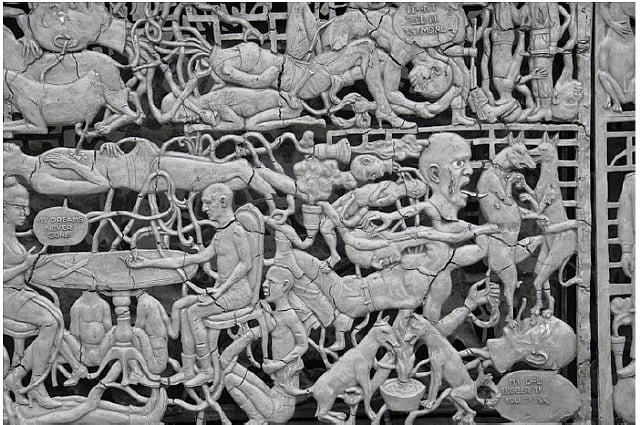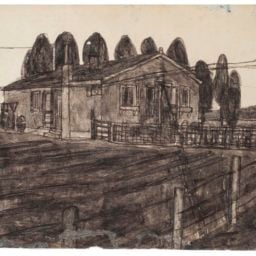

La Biennale di Venezia, or the Venice Biennale, has for over a century been one of the most venerable art events in the world. First held in 1895, the 2013 Biennale opened on May 29 for previews and runs through November 24. Comprised of a main exhibition curated by the New Museum’s Massimiliano Gioni, along with dozens of national pavilions and concurrent events, the Biennale sprawls across Giardini, Arsenale, and various cloisters and palazzos in Venice, Italy. Its overwhelming array of artistic offerings will be sure to impress the estimated 500,000 visitors expected to attend the event by the time it closes in November.

Entang Wiharso, Crush Me (detail), 2013, Pearl Lam Galleries, Shanghai
The Biennale’s main exhibition, entitled Il Palazzo Enciclopedico (the Encyclopedic Palace), takes its theme from an 11-foot-tall architectural model built by self-taught artist Marino Auriti in the 1950s. Auriti conceived the work as a model for a museum that was intended to house all of the knowledge in the world, an appropriate reflection of the giant international scope of the Biennale today. Gioni’s incarnation amasses works by over 150 artists from 38 countries, which span over the past century. The diverse represented artists range from Contemporary heavyweights, such as Bruce Nauman (American, b.1941) and Rosemarie Trockel (German, b.1952), to emerging and self-taught figures, including James Castle (American, 1899–1977). The Encyclopedic Palace also offers a show within a show, organized by Cindy Sherman (American, b.1954), who sets sculptures by Paul McCarthy (American, b. August 4, 1945) and Charles Ray (American, b.1953) alongside works by Norbert Ghisoland and Phyllis Galembo (American, b.1952).

Christopher H. Martin, Ordos, The McLoughlin Gallery, San Francisco, CA
The vast main exhibition is presented along with national pavilions from 88 countries, 10 of which are exhibiting at the Biennale for the first time. Many of the national exhibitors expand on the Encyclopedic Palace’s themes of reflection and accumulative density, embodied in Sarah Sze’s complex assembled installation of everyday objects at the United States pavilion. The Biennale institution itself is memorialized at the Romanian pavilion, where five dancers act out artworks from biennales in previous years. Angola’s award-winning show is located in the Palazzo Cini, where paintings by Renaissance masters such as Bernardo Daddi (Italian, 1512–1570) and Sandro Botticelli (Italian, 1444–1510) are juxtaposed with large-format photographs by Edson Chagas, which are stacked and available to take away.

David Middlebrook, Retirement, The McLoughlin Gallery, San Francisco, CA
Rounding out the central exhibit and national shows of the Biennale are 47 collateral events. These include an installation by artist Rudolf Stingel (Italian, b.1956), who covers the Palazzo Grassi with Persian-inspired carpeting that serves as a backdrop to his Photorealist paintings. This year’s remarkably immense and varied Biennale will no doubt galvanize its thousands of visitors over the next five months.

Joyce J. Scott, Buddha (Fire and Water), 2013, Goya Contemporary & Goya-Girl Press, Baltimore, MD
Katharine Richardson is a client services representative for artnet Galleries.






